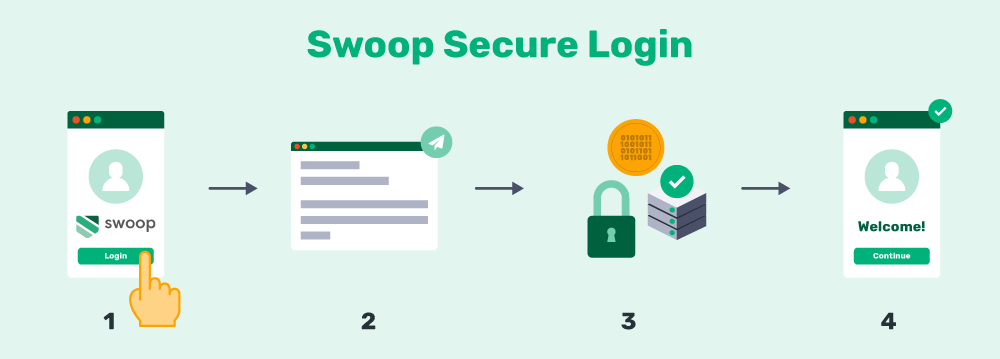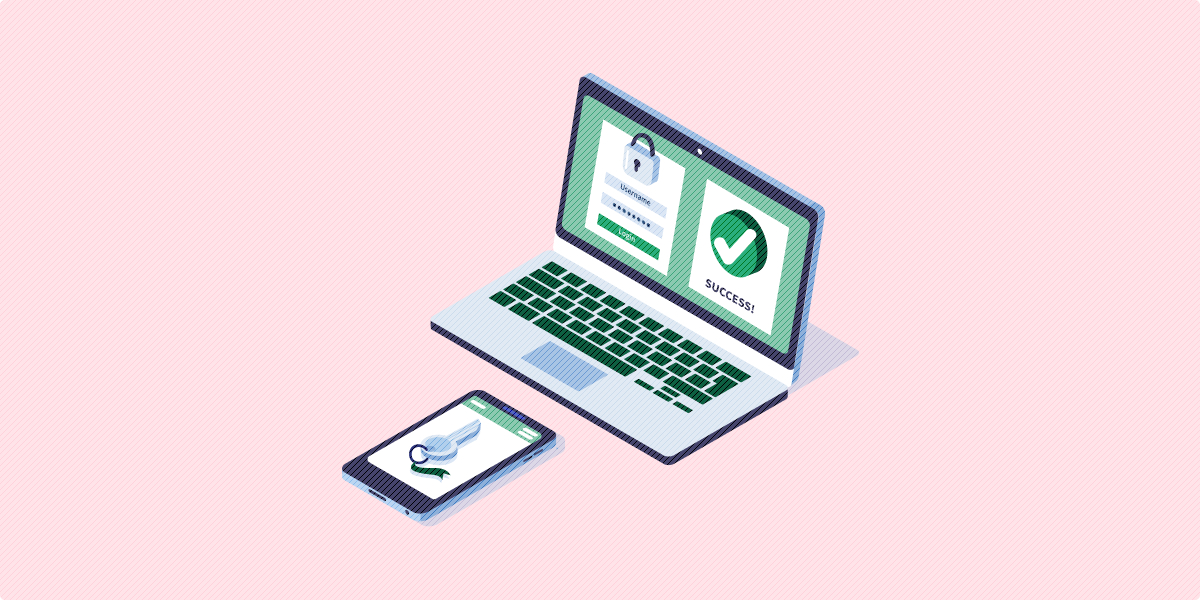We’ve all experienced navigating a new web application. Sometimes the experience is easy and we’re able to maneuver our way through the tool with little to no problems, while other times the process is confusing and leaves us questioning whether this tool will make our lives more convenient.
Every company strives for the former, but not all make the cut.
So what’s the solution for companies who want to start the new user experience off on the right foot? A greater attention to user onboarding.
The process of introducing new users to your application or website and providing them with steps or tips to get started is the definition of user onboarding.
The popular phrase, “first impressions matter” stands true, especially when it concerns user onboarding. Your onboarding process reflects the overall quality of your product. Think about it: if a user has a frustrating experience trying to get acquainted with your application, that doesn’t inspire confidence in your tool’s ability to solve their need.
That’s why there are so many tips and strategies companies can use to improve their application’s onboarding process. And, we’ve got 4 ways you can benefit from user onboarding software.
Here’s what we’ll cover:
- Create a foolproof user onboarding plan.
- Simplify the login process with user onboarding software.
- Make the user onboarding experience engaging and intuitive.
- Maintain a consistent brand throughout all your user onboarding materials.
While these tips, ultimately, make your user’s experience enjoyable, having a sound user onboarding experience is also beneficial for employees. New team members will be able to easily understand your products and help customers through any challenges.
So what are you waiting for? Let’s dive into the first tip!
Say Goodbye to Passwords
and
Hello to Secure Logins.
Go passwordless and delight your users with secure and seamless one-click login.
1. Create a Foolproof User Onboarding Plan
From setting up an account to navigating your tools to learning how each feature works, there’s a lot you have to cover in your user onboarding process. That’s why it’s important to create a plan that explains what you want to cover and how you plan to introduce it to your users. Plus this will help to determine what types of user onboarding software you’ll need to make the process fun for your customers.
Of course, you won’t be able to cover everything your application can do in your onboarding, so you’ll have to narrow down what elements are important for a user to know right away.

Before you start creating your onboarding materials, focus on your objectives. Because each application is different, no company’s desired outcome will look the same. However, there are a few areas your onboarding plan should focus on:
- Application Benefits. What are 2-3 key benefits that your application provides? How are are those advantages achieved using your application?
- Application Functions. What core functions or capabilities is your application able to accomplish? How can you convey these functions in your onboarding process?
- Application Account. Is the user’s account critical to the functionality of your application? If so, how will you show users their account and ways to customize their settings?
- Application Security. How is your application protected? Can you convey your application’s security in a way that’s easy for the user to understand?
- Application Examples. Is it important for the user to see examples or practice certain features themselves before completing the onboarding process? How can you walk through these actions in an engaging way?
Keep in mind the challenges users might face when navigating your application. Are there any actions that are particularly hard to achieve?
You might have to compile feedback from your staff and beta users to get the answers to these questions. Any challenges or difficult steps could affect how you create your onboarding process, so it’s a vital step to the planning stage.
Ultimately, your plan should cover all three stages of the onboarding process — the registration phase, the initial onboarding phase, and every phase of the customer’s use of the application.
Key point: Creating a plan will help you determine what features and actions to cover in your onboarding process. It’s important to stick to the essentials so you don’t overwhelm users with too much information all at once.
2. Simplify the Login Process with User Onboarding Software
If your application was a house, think of the login process as the front door. It’s the first hurdle users have to navigate before they can access your web application, and it’s vital to your website’s security.
Setting up an account should be one of the easiest parts of your process. After all, the goal of user onboarding is drive users into your app and show them how easy it is to use.
Too many fields and complicated password creation standards can deter users from completing the first step, especially if donors have to create a new username and password.
Nowadays, users are juggling an average of 27 accounts (and that number is only rising). As a result, people are being more particular about the accounts they set up. If setting up an account becomes too time-consuming, users are likely to abandon the process and move on to the next application.
Luckily for you, creating a simplistic login process isn’t unattainable — just eliminate the need for a password altogether!
Many organizations have realized the faults in password authentication (just check out our guide!) and have turned to passwordless options.
Passwordless login allows users to access an application using another form of authentication, such as email or fingerprint scanning.
For example, @Pay’s Swoop technology allows users to sign up and log in simply by sending an email. Signing up just takes three steps:
- Users press the “Sign Up” button on your company’s website.
- The button triggers a mailto link that directs users to a pre-written email with instructions on their next step.
- Once users send the email, @Pay’s system will run their email through three levels of security checks to verify the email address.
The process only takes a couple minutes to complete, and users will have the option add personal information if it’s required to complete the account. A very similar process is used to log in:

Using a passwordless login system (like Swoop) allows companies to make the signup and login process easy as well as secure.
Key point: The first step to user onboarding is creating an account. Ensure users you have a hassle-free and safe way to login by using a passwordless process like email authentication.
3. Make the User Onboarding Experience Intuitive and Engaging
Now that you have a plan, it’s time to determine how you’re going to convey your application’s capabilities. There are several ways you can go about this with the help of user onboarding software:
- Introduce new users to your application with a short video using Wistia.
- Input messages on the screen that lead users through the application and it’s uses with a tool like Tour My App.
- Set up a guided tour that explains your application’s features with Whatfix.
- Have users complete a series of steps to get comfortable using the platform with Appcues.
Some of the best training examples implement a combination of all of these types of user onboarding software to create an experience that is unique — the more creative the better!
Just like you want your website to be user-friendly, you should also want your application to be intuitive and easy to use.
However, you should avoid using too many features all at once as this can confuse the user. Your onboarding process should have a clear, linear path that focuses on one aspect of your application at a time.
At this stage in the process, it’s also important to keep your users engaged. A boring or complicated process means that donors are less likely to pay attention to your message and miss out on a key tip that could solve some of their challenges in the future.
By adding interactive elements into your onboarding process, users are more likely to retain the information you present and make it fun for the user, too.
Let’s say you’re a nonprofit that has built an application focused on advocacy and community interaction. As part of your onboarding process, you could guide donors through setting up their profile as well as have a checklist with steps like commenting in a community forum, adding an image to their account, or signing a petition through your advocacy portal.
Steps like this not only give the user the opportunity to complete the actions themselves but also demonstrate what your platform is used for.
Another way to make the user experience more interactive is by letting the user customize their experience. Require new users to fill out a short survey that asks them how they intend to use your application and guide them through the parts of your onboarding process that meet those needs.
Additionally, you can make different actions in your onboarding process optional (with the help of user onboarding software) so users can get to the areas they’re most interested in.
Keep in mind: everyone learns differently, so make sure your onboarding process appeals to all types of learners — whether they be visual, auditory, verbal, or kinesthetic learners.
Key point: The options are limitless and it’s up to your company to figure out what will make the process engaging and easy to understand.

1-Click Login is a simple & secure password-free authentication service.
With our patented technology, your website can improve security & increase customer conversion by removing passwords.
4. Maintain a Consistent Brand Throughout All Your User Onboarding Materials
We can’t stress this enough: your user onboarding process is the customer’s first impression of your application, and as far first impressions go, you want to make this one stick. There are plenty of free tools out there to help make your digital materials look professional and offer more function.
Maintaining a consistent brand is part of that process. It’s likely that your onboarding materials will cover multiple platforms from your application to informational emails to PDF documents.
All of these materials should match your organization’s brand and also have a distinctive design that separates them from the rest of your nonprofit’s materials. That way, users know that this email, stage in the application, or document is part of the onboarding process.
To maintain a sense of consistency (and still discern from your overall brand) many companies create a training mascot that guides users through the onboarding process and can be displayed on any other materials.
It’s also a great way to remind donors that whenever they see your mascot they’re in a training stage of the application.
As a rule of thumb, when creating your onboarding materials always include the following:
- Your company’s color scheme.
- Your company’s logo (try to place it in the same location in all your materials).
- A link to your company’s website and application (if different).
Keeping a consistent brand is important because it prevents donors from getting confused during onboarding. Since new users won’t have a full grasp on your application, you don’t want to complicate the process more than necessary by having too many different brands represented.
Creating a consistent brand across your website, application, onboarding materials, and more can be tricky, especially if you’re a small company or nonprofit. This list of website design companies from Double the Donation can help you find a design consultant with the skills you need.
Key point: A consistent brand is crucial so that your users can focus on what’s most important: understanding your application. Otherwise, they might get too confused about what site they’re on.
There you have it: four ways to improve your user experience with user onboarding software. Hopefully, these tips have helped you discover the gaps in your onboarding process as well as ways to make it better.
If you’re interested in more ways to improve your application, check out Swoop’s resources on password security and website authentication:
- Password Security Guide: Keeping Sensitive Information Safe. If you’re still convinced that passwords are the way to go for your website authentication, this guide walks you through all the reasons passwords are the best way to secure your users’ information.
- Two-Factor Authentication: A Definitive Guide For Websites. For more ways on how to secure your web application, learn how you can implement two-factor authentication into your login process.
- Why Your Website Should Utilize Passwordless Authentication. Interested in learning more about logging in with an email or fingerprint? Check out this list of passwordless login benefits to learn more.




